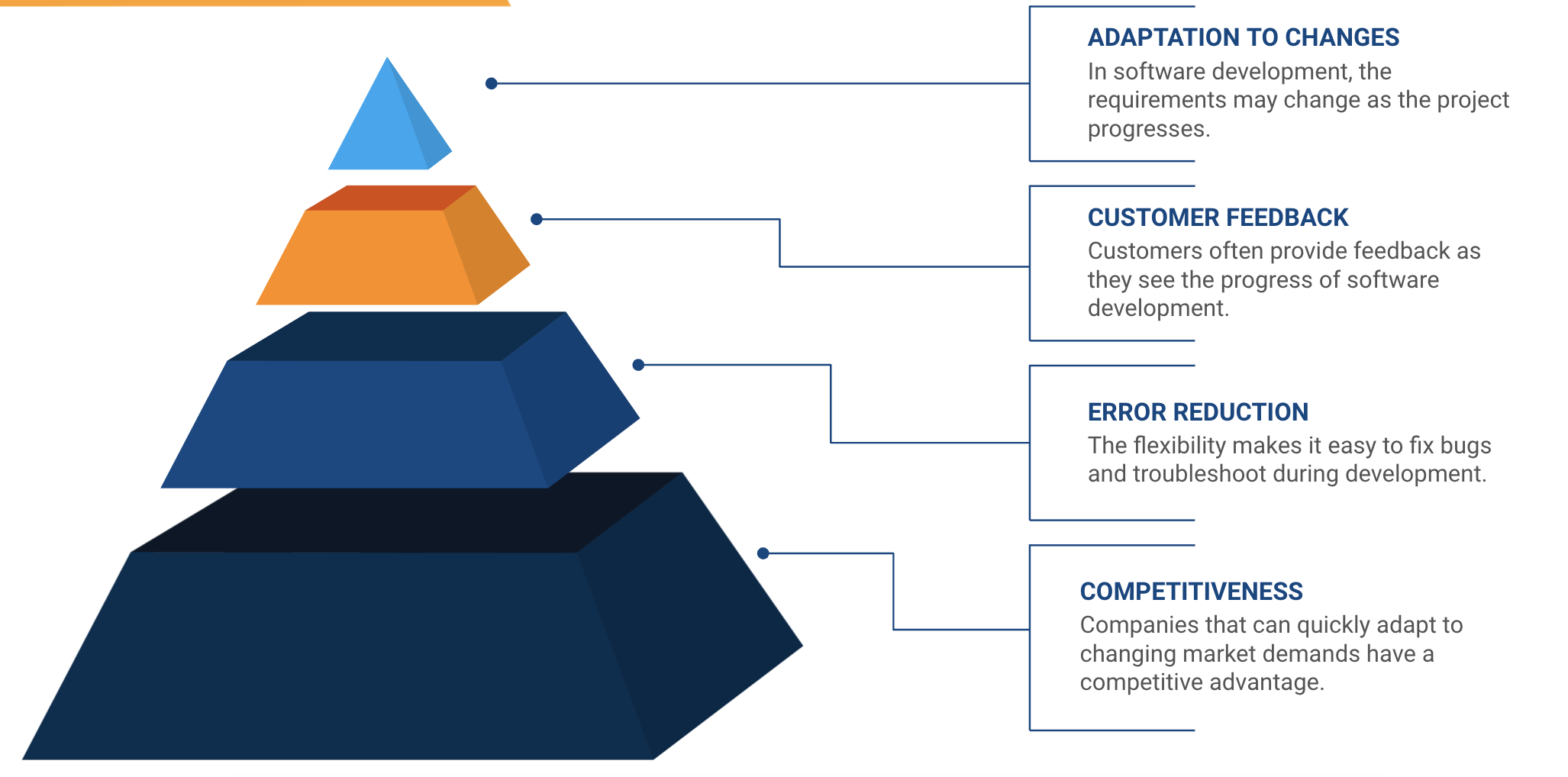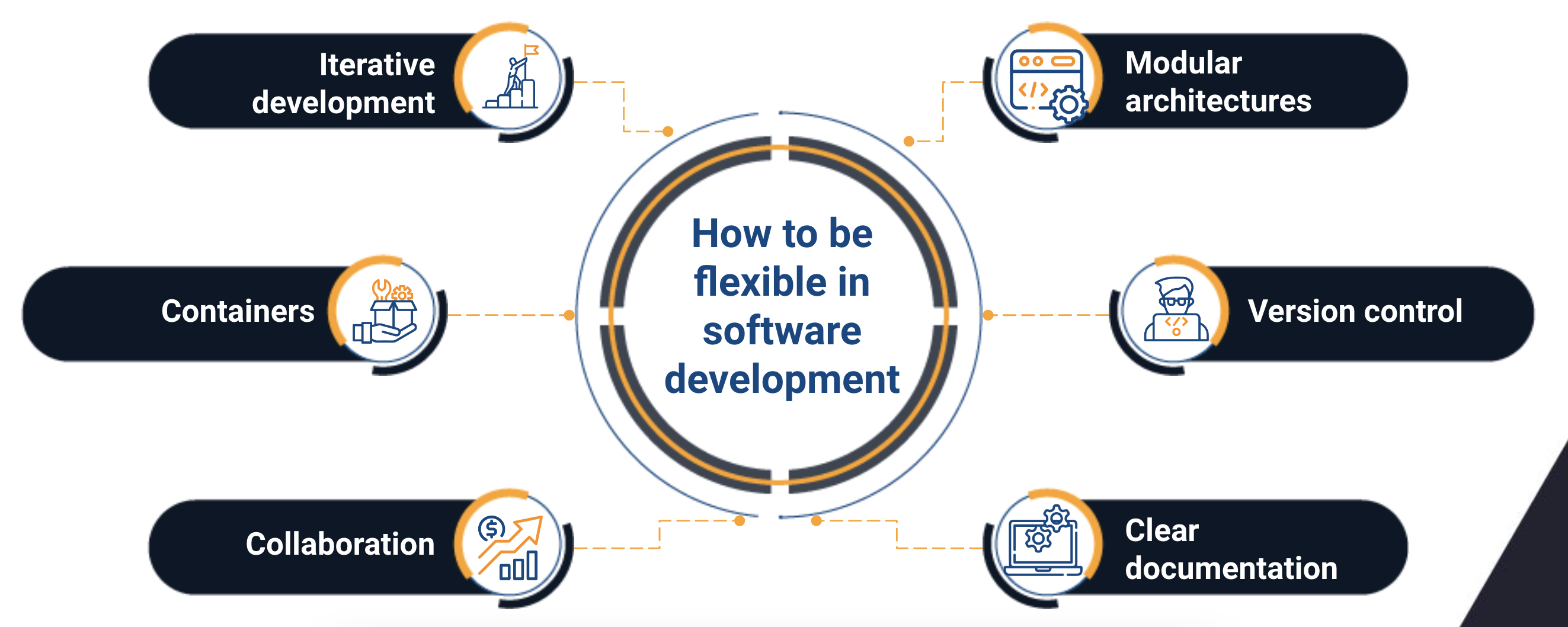Premium
How flexibility is key to software development?
September 06, 2023
Table of contents
Quick Access

Flexibility is an essential quality for success in software development. In a constantly changing technological environment, the ability to quickly adapt to new challenges, changing requirements and technological advances is crucial to guarantee the effectiveness, quality and competitiveness of software projects.
In this article, we will explain in detail how flexibility not only allows you to address software development challenges efficiently, but also promotes innovation and customer satisfaction, becoming a fundamental pillar in the software development industry.
Importance of flexibility in the success of software development
The importance of being flexible in software development lies in several key aspects that affect both the quality of the product and the success of the project. Here are some reasons why flexibility is essential:
Adaptation to changes in requirements
Software development requirements may change as the project progresses. Flexibility allows development teams to quickly adjust to these changes, preventing the software from becoming obsolete or unsatisfactory for the customer.
“The adaptive method allows faster responses to possible changes that may arise between the designed milestones. In other words, since agile development is based on iterations that provide continuous feedback, a development team can keep what works and change what tests rule out as useless or incompatible with end users", they pointed out in a Forbes article.
Evolving technological environment
Technology is constantly advancing. Flexibility allows new technologies, libraries, and approaches to be incorporated as they emerge, keeping software current and competitive.
Customer feedback
Customers often provide feedback as they see the progress of software development. Flexibility allows you to incorporate this feedback effectively, improving customer satisfaction.
“As software developers, we create solutions to meet the needs of our users. A deep understanding of their preferences and behaviors is critical to designing successful software. While best practices provide guidance, they may not always align with specific project requirements. Therefore, adapting software engineering practices to the intended user base is key to ensuring that satisfaction and commitment levels are high”, they commented on the DEV portal.

Continuous improvement
Adaptability promotes continuous improvement. Teams can learn from past mistakes and experiences, applying best practices and optimizing software over time.
"Several authors have called attention to how flexibility allows teams to see problems in new ways, find creative solutions, and redefine problems to find original solutions", researchers explained in a study done in Turkey.
Reduction of errors and defects
The flexibility makes it easy to quickly and efficiently fix bugs and resolve issues during software development, which improves software quality and user experience.
Competitiveness
Companies that can quickly adapt to changing market demands have a competitive advantage. Flexibility allows organizations to stay agile and respond to new opportunities.
Scalability
The ability to scale software development to handle growing workloads is essential for growing businesses. Flexibility in architecture and design facilitates this scalability.
Sustainable maintenance
Software with flexibility is easier to maintain in the long term. Upgrades and maintenance are less expensive and less likely to cause disruption.
Innovation
Flexibility encourages innovation, as teams can experiment with new ideas and approaches without having to completely redesign the software.
Resistance to uncertainty
The business environment is inherently uncertain. Flexibility acts like a safety net, allowing organizations to adjust to unexpected changes.
Long life cycle
Flexibility can significantly extend the life cycle of software, saving time and resources building new solutions from scratch.

How do you achieve flexibility in software development?
Flexibility in software development is achieved through practices such as the adoption of agile methodologies, the use of design patterns that allow for extensibility, the implementation of automated tests, and the choice of architectures that facilitate modularity and scalability.
It is also achieved with:
Iterative and incremental development: Divide the project into smaller iterations or increments. Each iteration produces a working version of the software, making it easier to adapt to changing requirements.
Modular architectures: Design software in loosely coupled, stand-alone modules. This allows changing or upgrading individual components without affecting the entire system.
Version control system: Use a version control system (such as Git) to track and manage changes to code. This makes it easy to collaborate and roll back changes if needed.

Containers: Use containers like Docker to encapsulate applications and their dependencies. Containers are portable and make it easy to deploy in different environments.
“Containers also provide flexible storage options when running microservice applications. Unlike virtual machines, which are limited to stateful storage formats, containers have the option of being formatted as stateful or stateless. This means that the storage capacity of each microservice application can be managed independently of other connected services, providing greater flexibility and control", explained in an IBM article.
Microservices architecture: If appropriate, consider a microservices architecture, where functions are broken down into independent services. This allows parts of the system to be scaled and modified independently.
Clear documentation: Maintain detailed and up-to-date software documentation. This helps developers understand how the system works and makes it easier for future modifications.
Collaborative culture: Fosters a culture of collaboration and open communication within the development team. This allows you to discuss and address changes effectively.
Continuous feedback: Seek feedback from users and the client on a constant basis. This will help you identify necessary changes and continually improve the software.
Flexible planning: Instead of planning the entire project in detail from the beginning, adopt a more agile planning that adjusts as more information is obtained and needs adapt.
Being flexible in software development is essential to maintaining relevance, quality, and competitiveness in an ever-evolving technology environment. Adaptability enables development teams to face challenges, meet changing customer needs, and take advantage of emerging opportunities effectively.
We recommend you this video
Related Blogs
-10.43.50-a.m.png)
Frequently asked questions about hiring web development companies
-3.51.27-p.m.png)
What are the steps to hire an IT outsourcing company?
-10.18.48-a.m.png)
5 pain points that nearshore software development solves for your business
-1.17.37-p.m.png)
We look at how AWS tools help you optimize costs
-10.38.35-a.m.png)
The basics of cloud computing
-9.19.54-a.m.png)
